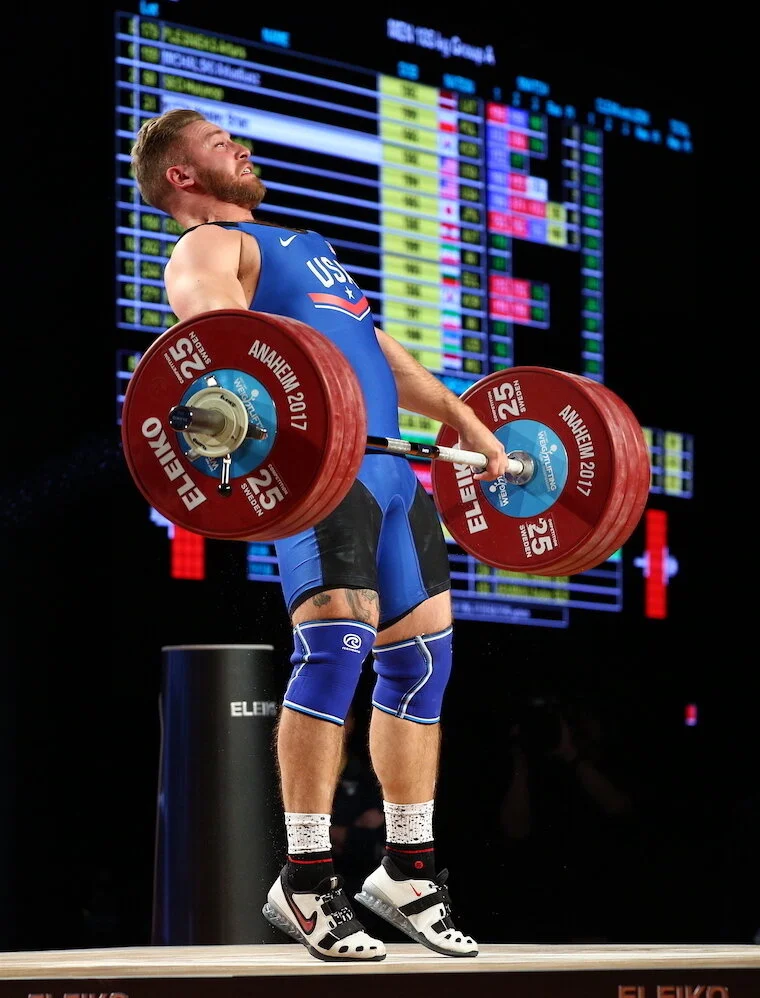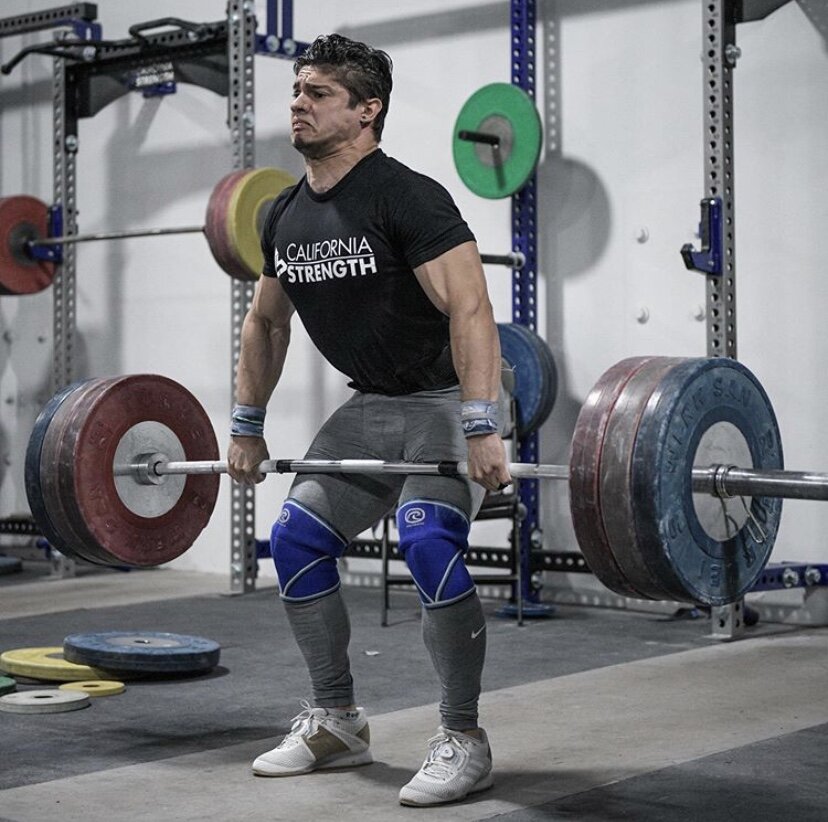Weightlifting 101: How To Make BAR CONTACT? (BEGINNER TO ADVANCED)
10 Minute VideoIn this video we’re answering the question, where should the bar make contact (with the body) in the Snatch & Clean.
In the Snatch, we want to make contact above the pubis and below the hip bone. If you imagine the body as a lever, we want to make contact as close to the fulcrum of that lever as possible.
Why we need to make contact at different points on the body in the Snatch vs. the Clean is because of length, load and outcome.
The LENGTH of the Snatch is going to be significantly longer in terms of the length of the pull compared to that of the Clean.
The LOAD is going to be substantially lighter, somewhere between 80% and 85% of your best Clean and the outcome in the Snatch is going to be different because all we're really focused on is stability. We don't really care about catching any sort of bounce or any sort of stretch shortening cycle to make an efficient squat recovery like in the Clean.
Length, load and outcome dictate differences in the pull and those differences in the pull will ultimately reflect where the bar makes contact on the body. How do you make contact at that proper position in the hip?
We need to cover four domains of technique, starting with position.
Our position refers to not only where you are at the Power Position, but where you start from. In the Snatch, you want to keep your back angle as flat as possible. Once you assign the angle with your back and address the bar, we need to assign our foot pressure back over the ankle.
As you initiate your pull, think about performing a leg press, pushing the platform away from you so that the bar rises up and into your body. If you continue to push with the legs above the knee, the shoulders will remain in advance of the bar. If your weight stays back on the foot, the bar will come into the body. As you keep pushing with the legs, your contact point will be right at the hip.
In the Snatch, one of the most common errors is bringing the bar in too low. If you make contact too low, you can definitely bruise yourself and it can be a very painful sensation. Make sure that you don't do that by staying over the bar while keeping your arms passive and long.
Tension is going to always affect where the bar makes contact. If you can just focus on keeping the pressure back on the foot, that'll allow you to keep your arms passive. The second your weight shifts forward to the ball of the foot, your arms will engage, your shoulders will then farm tension by going behind the bar and you'll make contact low resulting in a painful, ineffective pull. Make sure that tension is assigned correctly from the floor. As you assign tension, think about a 360 degree brace from your core to your lumbar. The tension in the upper back needs to be assigned by pulling the sub scap down, engaging the lats so that you maintain that rigid thoracic allowing you to relax your arms.
In the Snatch, timing and tempo are interrelated. If timing refers to the point you start pushing with the legs from the floor, tempo is going to refer to the pace at which the bar ultimately arrives at the hip. Make sure to use a tempo that's appropriate for you.
The Clean contact point, because we have a substantially shorter movement (somewhere around 80% of the length of the Snatch) and because we have a narrower grip, the contact point should be as low as you can possibly execute a good vertical pull. Make sure that your shoulders stay on top of the bar.
Making contact with the bar somewhere around mid thigh is optimum for most people. We bring the bar in lower in the Clean because the length of the pull is not quite as long. Because we have about 80% of the distance to cover the load is going to be significantly heavier (somewhere around 120% of what we Snatch).
With a heavier load, we need to meet the bar in a half squat, absorb the force efficiently, and then use that stretch shortening cycle to create a really efficient, fast squat recovery so that you have reserve energy leftover to jerk. We need to have a steeper back angle in the Clean compared to the Snatch and need to make sure that our shoulders stay on top of the bar so that you can push with the legs and maintain that posture. The tempo is going to be a little faster and more aggressive than in the Snatch.
To summarize, contact point in the Snatch needs to be in the hip, right above the pubis below the hip bone. Contact in the Clean needs to be as low as you can effectively create the right power position.
TRAIN WITH US ONLINE
You Deserve To Be On The Podium
Hey, welcome to California Strength. We help weightlifters like you accomplish their training & competition goals. Join our online team and get results for less than $1 / day.
About Dave Spitz
He is the founder and head coach of California Strength. Dave holds recognition as a USAW Senior International Coach and is a Certified Strength & Conditioning Specialist. He’s spent the past 15+ years coaching athletes in Olympic weightlifting, CrossFit and the NFL.
I’m Interested In…
Tired Of Writing Your Own Weightlifting Programs?
Join our online team and get the help you need for less than $1 / day.




